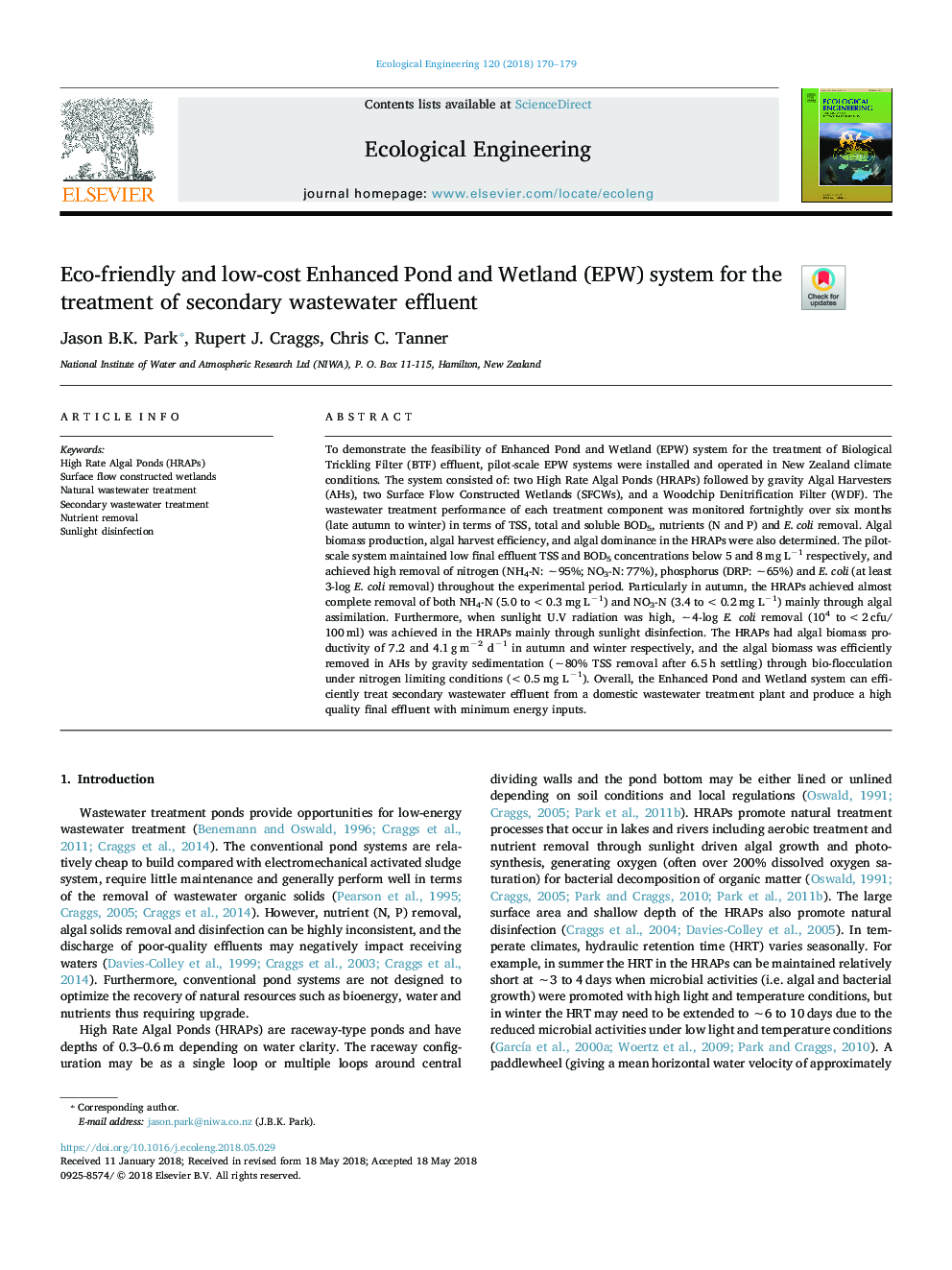| کد مقاله | کد نشریه | سال انتشار | مقاله انگلیسی | نسخه تمام متن |
|---|---|---|---|---|
| 8847782 | 1617982 | 2018 | 10 صفحه PDF | دانلود رایگان |
عنوان انگلیسی مقاله ISI
Eco-friendly and low-cost Enhanced Pond and Wetland (EPW) system for the treatment of secondary wastewater effluent
دانلود مقاله + سفارش ترجمه
دانلود مقاله ISI انگلیسی
رایگان برای ایرانیان
کلمات کلیدی
موضوعات مرتبط
علوم زیستی و بیوفناوری
علوم کشاورزی و بیولوژیک
بوم شناسی، تکامل، رفتار و سامانه شناسی
پیش نمایش صفحه اول مقاله

چکیده انگلیسی
To demonstrate the feasibility of Enhanced Pond and Wetland (EPW) system for the treatment of Biological Trickling Filter (BTF) effluent, pilot-scale EPW systems were installed and operated in New Zealand climate conditions. The system consisted of: two High Rate Algal Ponds (HRAPs) followed by gravity Algal Harvesters (AHs), two Surface Flow Constructed Wetlands (SFCWs), and a Woodchip Denitrification Filter (WDF). The wastewater treatment performance of each treatment component was monitored fortnightly over six months (late autumn to winter) in terms of TSS, total and soluble BOD5, nutrients (N and P) and E. coli removal. Algal biomass production, algal harvest efficiency, and algal dominance in the HRAPs were also determined. The pilot-scale system maintained low final effluent TSS and BOD5 concentrations below 5 and 8â¯mg Lâ1 respectively, and achieved high removal of nitrogen (NH4-N: â¼95%; NO3-N: 77%), phosphorus (DRP: â¼65%) and E. coli (at least 3-log E. coli removal) throughout the experimental period. Particularly in autumn, the HRAPs achieved almost complete removal of both NH4-N (5.0 to <0.3â¯mg Lâ1) and NO3-N (3.4 to <0.2â¯mg Lâ1) mainly through algal assimilation. Furthermore, when sunlight U.V radiation was high, â¼4-log E. coli removal (104 to <2â¯cfu/100â¯ml) was achieved in the HRAPs mainly through sunlight disinfection. The HRAPs had algal biomass productivity of 7.2 and 4.1â¯gâ¯mâ2 dâ1 in autumn and winter respectively, and the algal biomass was efficiently removed in AHs by gravity sedimentation (â¼80% TSS removal after 6.5â¯h settling) through bio-flocculation under nitrogen limiting conditions (<0.5â¯mg Lâ1). Overall, the Enhanced Pond and Wetland system can efficiently treat secondary wastewater effluent from a domestic wastewater treatment plant and produce a high quality final effluent with minimum energy inputs.
ناشر
Database: Elsevier - ScienceDirect (ساینس دایرکت)
Journal: Ecological Engineering - Volume 120, September 2018, Pages 170-179
Journal: Ecological Engineering - Volume 120, September 2018, Pages 170-179
نویسندگان
Jason B.K. Park, Rupert J. Craggs, Chris C. Tanner,